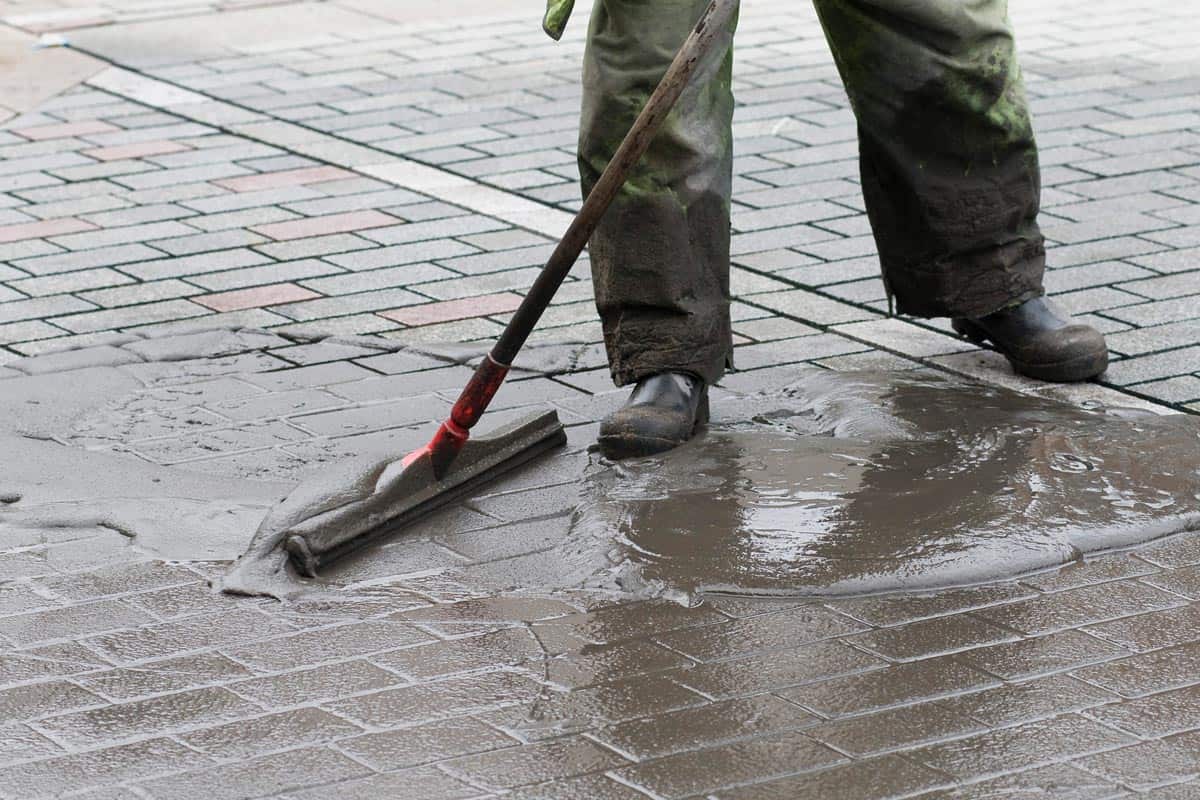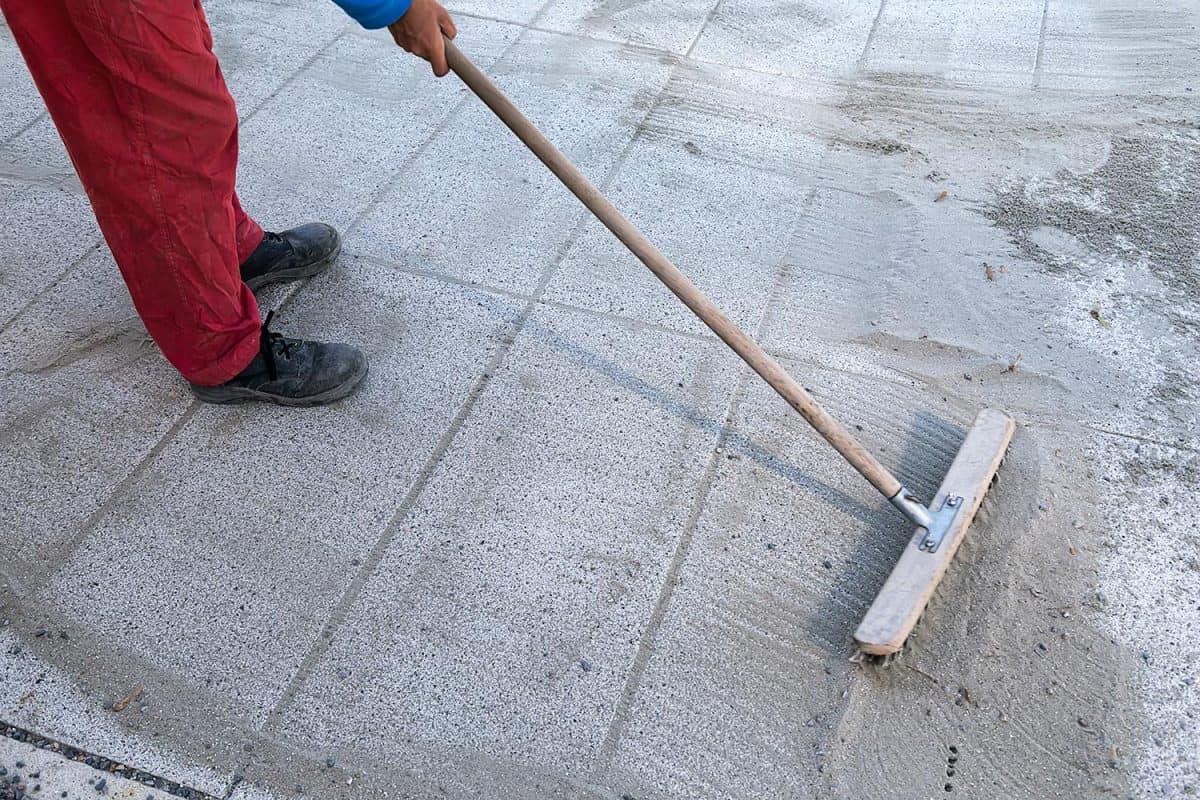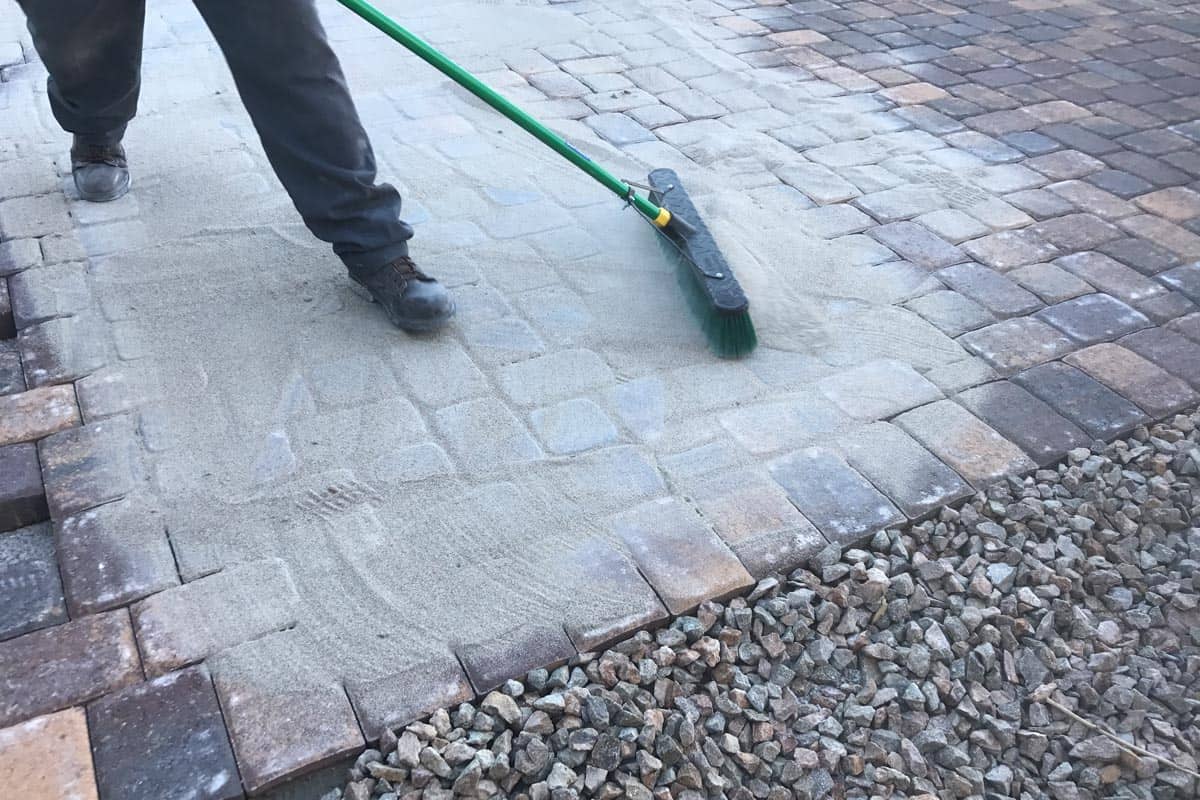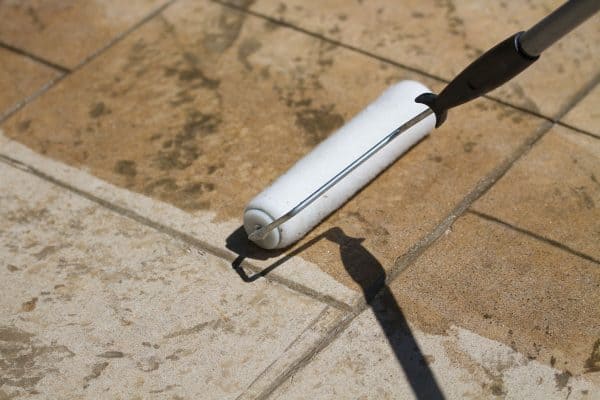Disclosure: We may get commissions for purchases made through links in this post.
Travertine pavers are sturdy and durable; they can withstand time and heavy traffic. So is it still necessary to seal them? We did thorough research, and here’s what we found out.
Porous by nature, travertine is absorbent of moisture, the leading cause of deterioration. That said, sealing is highly recommended to protect the stones not only from water but also from other harmful factors such as wind and UV rays.
So what type of sealant should you use for travertine pavers and how should you apply it? Read further to learn more!

Best Sealant For Travertine Pavers
A sealant is a liquid product specifically made to block moisture from seeping underneath the pavers. It penetrates deep into the pores and plugs them.
The recommended sealant for travertine is the siloxane-based sealer. It’s breathable and resistant to water and extreme temperatures.
Check out this product on Amazon.
5 Factors To Consider When Buying A Sealant
Plenty of sealants are available out there, but it will help to refer to these factors before you buy one:
Appearance
Sealants come with different types of finish: natural, satin, and glossy. Natural is invisible and retains the color of the stones, satin leaves a velvety texture, and glossy renders a wet look.
Eco-friendly
Some sealants give off volatile organic compounds (VOCs) that pose health hazards and plant contamination. But some contain no harmful chemicals.
Durability
Regular sealers last three to four years, but some last up to 15 years, depending on the materials they are made of.
Weather Protection
As mentioned, sealants keep pavement from weather-related damage. But there are brands that do the job better.
Petroleum Spills
Petroleum spills dissolve sealants, but other sealers aren’t resistant to gas or oil leaks.
Are Travertine Pavers Worth It?

Weigh the following advantages and disadvantages of travertine pavers, and see if it's worth choosing them for your patio or walkway.
Advantages
- Barrier: travertine exposed to different elements turns fragile, eventually, they will corrode. Sealants act as a barrier over it.
- Mold and Mildew Prevention: because it keeps the bedding dry, mold and mildew will never thrive. So no need to worry about them messing your structure!
- Aesthetic: it intensifies the original color of the stones, boosting your house's curb appeal. As it leaves no space for molds, it keeps them tidy.
- Weeds Deterrent: this fills the gaps in between pavers, deterring weeds from growing. So say goodbye to unwanted vegetation.
- Acid Resistance: travertine is mostly made of calcium; it reacts quickly to anything acidic such as fruit juice and vinegar, but sealants repel acids.
Disadvantages
- Costly: sealers can be relatively expensive. The thing is they can offset unexpected repairs.
- Reapplication: once the travertine has been sealed, it needs to be resealed periodically. The frequency depends on the brand.
- Hazardous Chemical: as we’ve mentioned, some sealers can adversely affect your health.
How To Seal Travertine Pavers

Below is the step-by-step instruction to seal your pavers:
- Clean the pavers. Remove all the debris such as fallen leaves, rocks, and dust that can cause bumps or prevent the sealant from adhering to the stones.
- Scrub the stubborn stains in between paver joints.
- Once done, rinse with a hose.
- Allow the surface to dry completely.
- Spray a light coat of water. As it dries, apply the first coat of sealant with a roller.
- Remove the excess sealant with an absorbent cloth. (Use a white cloth to avoid staining the sealant.)
- Apply the second coating then leave it for 24 hours. Avoid any foot traffic until the sealant cures.
How Much Does Travertine Sealant Cost?

A travertine sealant can cost anywhere between $30 to $60 per quart or $100 to $200 per gallon. Experts recommend another two coatings after the initial coating to make the paver more impenetrable and durable.
Does Sealing Travertine Make It Slippery?
Sealers can reduce traction on travertine if applied incorrectly, making it slippery, particularly when wet. Don’t hesitate to ask the assistance of professionals if you think you can’t do it yourself.
Dos And Don'ts For Travertine Pavers
Follow these pointers below for proper maintenance of your pavers:
Do's
- Seal the stone. As a general rule, seal the newly installed paver before using it. Travertine is sturdy but it is not invincible. Sealing extends its life expectancy.
- Mop weekly. No need to do anything special to maintain travertine; mopping once a week with a cleaning solution compatible with the sealant is enough.
- Get rid of petroleum spills immediately. Just because the travertine is sealed, doesn’t necessarily mean that you can overlook spills on it. As we’ve discussed earlier, petroleum products dissolve sealants, so wipe them off before they do.
Don’ts
- Never compromise the quality of your pavers. Don’t choose price over quality. You might end up spending more due to reapplication in the long run. Invest in a sealer that lasts for decades before requiring a significant recoating.
- Do not use acidic cleansers. Highly acidic solutions such as muriatic acid, vinegar, and bleach cause discoloration and break down the aggregate. Stick to mild detergents.
- Do not neglect the grout Line. Keep the grout lines tidy as they also impact the appearance of the paver. To clean them, mix baking soda with a small amount of water to create a paste, then scrub the lines with a tiny brush.
What Should You Put Between Travertine Pavers?
Polymeric sand is the most popular choice for filling paver joints. It consists of quartz and silica that lock the pavers in place, thus preventing shifting.
How To Install Polymeric Sand On Travertine Paver
Prepare the following tools prior to the application:
- Brooms: You will need a hard broom to sweep the polymeric sand into the paver joints and a soft-bristle broom to collect the residue.
- Hose: This is necessary as you have to water the sand to activate it.
Click here to see this product on Amazon.
- Leaf Blower: This is to blow away the remaining particles that the broom might have missed.
Click here to see this product on Amazon.
Steps to install polymeric sand:

- Tidy the paver first. Make sure it's free of debris.
- Pour the polymeric sand on the surface.
- Sweep and distribute the substance into the paver joints. Be sure they’re packed.
- Remove the residue with a soft bristle brush.
- Use the leaf blower to get rid of any visible residue, otherwise; it will leave a polyhaze which is difficult to fix.
- Water the sand with a house. After the initial shower, wait 3 to 4 minutes then shower it again. Stop once you see a puddle of foam on top.
- Blow away the sand that trickles out of the joints.
- Allow the polymeric to dry for 24 to 48 hours.
- Avoid any foot or vehicular traffic during the curing process.
How Much Does Polymeric Sand Cost?
The price varies depending on the brand and location, but on average it can cost $20 to $40 per 50 to 55 lb bag. It might be a little pricier than the other paver locking sand, but it can outweigh the cost of having to repair the shifting stones.
Click here to see this item on Amazon.
How Long Does Polymeric Sand Last?

Polymeric sand lasts for 10 years. With proper maintenance, you can stretch its lifespan up to 15 years. Once the time for resanding comes, you must remove the existing sand and start from scratch—you can’t top up polymeric sand or else it won’t adhere to the substrate.
In Closing
Travertine pavers are sturdy and durable, but they're porous, making them susceptible to moisture, so it’s necessary to seal them. A sealant acts as a barrier that protects the stones from harmful elements.
If you liked this article, you might also like these related posts:





![Vibrant Red Paver Stone Path, Can You Spray Paver Sealer? [How To Apply It]](https://pavingplatform.com/wp-content/uploads/2022/04/Vibrant-Red-Paver-Stone-Path-600x400.jpg)
![Properly laid out red pavers for a garden, Can You Tint Paver Sealer? [And How To]](https://pavingplatform.com/wp-content/uploads/2022/04/Properly-laid-out-red-pavers-for-a-garden-600x400.jpg)
